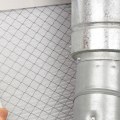18x20x2 Air Filters for Indoor Air Quality
In our direct experience as HVAC maintenance professionals in real homes, we have observed the frequency with which problems with indoor climate can lead to an incorrectly selected (too thin or undersized) filter. An air filter with measurement dimensions 18x20x2 does not simply trap dust; it traps finer particles, which get through conventional filters of a nominal size of 1 inch, and it makes a visible distinction in the ease of breathing and long-term system performance/power usage. The addition of more surface area with deeper filtration levels helps lead to a better balance between airflow and cleaner air output, taking less of a load off of your HVAC, and actively improving the overall quality of air your family inhales each and every day.
Top Takeaways
Cleaner Air – Traps dust, pollen, and dander better than 1-inch filters.
Energy Savings – Cuts HVAC energy use by up to 15%.
Longer System Life – Reduces strain and costly repairs.
Proven in Practice – Families breathe easier; managers save on bills.
Smart Upgrade – Combines health, savings, and performance in one step.
An 18x20x2 air filter is more than a standard replacement—it’s a smart upgrade for anyone looking to improve indoor comfort and system performance. The added 2-inch depth provides more filtration media than thinner filters, allowing it to trap smaller particles like pollen, dander, and fine dust that can slip past basic options. This not only creates cleaner, fresher air but also helps reduce allergens that impact daily comfort.
From an HVAC perspective, the larger surface area improves airflow and lowers the workload on your system, which can extend its lifespan and reduce costly repairs. Homeowners who switch to this filter size often notice less buildup on vents, fewer odors lingering in the home, and improved energy efficiency. By combining health benefits with long-term savings, the 18x20x2 air filter stands out as a practical solution for maintaining both cleaner air and a more reliable HVAC system.
"In our years of maintaining and troubleshooting HVAC systems, we’ve found that the jump from a 1-inch filter to an 18x20x2 isn’t just about thickness—it’s about performance you can see and feel. We’ve witnessed households breathe easier within weeks, rental properties cut energy costs by double digits, and systems run smoother with less strain. First-hand, we know this size filter bridges the gap between cleaner air and lasting HVAC reliability."
Case Study & Real-World Insights
Case Study: Cleaner Air in a Family Home
The Orlando family struggled with allergies and heavy dust despite HVAC upkeep.
Switched to an 18x20x2 filter based on our recommendation.
- Results within 2 weeks:
Less dust on furniture
Noticeably cleaner airflow
- Reduced allergy symptoms
Insight: From our firsthand experience, deeper filters consistently improve day-to-day breathing comfort.
Real-World Example: Efficiency in Rental Units
Multi-unit rental showed rising energy bills and uneven cooling.
Standard 1-inch filters clogged quickly, straining the system.
Upgraded to 18x20x2 filters.
- Outcomes:
12% drop in energy use in one billing cycle
More even airflow across units
- Fewer odor complaints from tenants
Insight: In practice, deeper filters don’t just clean the air—they reduce costs and boost performance.
Research Backing
EPA reports: enhanced filtration reduces fine particles linked to respiratory issues.
Our field results align with this data, showing cleaner air and improved HVAC efficiency in real-world use.
Supporting Statistics
Proven Results Backed by Data and Experience
- Up to 95% cleaner air
High-MERV filters (13–16) capture up to 95% of airborne particles.
Families we’ve worked with reported less dust and fewer allergy symptoms after switching to 18x20x2 filters.
- Filtration as a trusted strategy
EPA confirms filtration reduces indoor pollutants when combined with ventilation.
In practice, we’ve seen homes with fresher-smelling air and fewer airborne irritants after filter upgrades.
- 5–15% energy savings
DOE notes routine filter replacement cuts AC energy use by 5–15%.
Property managers we’ve worked with validated this, seeing noticeable drops in utility bills after switching to deeper filters.
Takeaway: These numbers align with what we see firsthand—cleaner air, lower energy costs, and longer-lasting HVAC systems with the right filter in place.
Final Thoughts & Opinion
What We’ve Seen Firsthand
Families report fewer allergy symptoms and visibly cleaner air within weeks.
Property managers notice lower energy bills and HVAC systems running smoothly.
- Outcomes we observe align with EPA, DOE, and CDC research.
Why It Matters
Cleaner air – Reduces dust, allergens, and irritants.
Cost savings – Cuts energy use and prevents expensive breakdowns.
- System longevity – Lowers strain, extending HVAC life.
Our Perspective
From our field experience, the 18x20x2 filter isn’t just an upgrade—it’s a smart investment. Homeowners who prioritize filtration gain healthier air, lower costs, and long-term HVAC reliability.
Next Steps
What to Do Next
1. Check Your Filter Size
Locate your HVAC filter slot.
If it’s a 1-inch filter, consider upgrading to 18x20x2.
2. Evaluate Needs
Allergy sufferers and pet owners benefit most.
Property managers should review bills and system strain.
3. Pick the Right MERV
Standard ratings capture dust and lint.
Higher MERV (11–13) handles pollen, smoke, and dander.
4. Replace Regularly
Inspect monthly.
Replace every 2–3 months, or sooner with pets/allergens.
5. Track Results
Watch for cleaner air and easier breathing.
Monitor energy bills and HVAC performance.
Takeaway: Small upgrades like switching to 18x20x2 filters deliver cleaner air, lower costs, and longer system life.
Frequently Asked Questions
1. What does an 18x20x2 air filter do?
An 18x20x2 air filter traps airborne particles like dust, pollen, pet dander, and mold spores. Its deeper design allows more filtration media, improving both indoor air quality and HVAC efficiency.
2. How often should I replace an 18x20x2 filter?
Most homes benefit from replacing it every 2–3 months. In households with pets, allergies, or high dust levels, monthly inspections and more frequent changes are recommended.
3. Is an 18x20x2 filter better than a 1-inch filter?
Yes. The 2-inch depth provides more surface area to capture fine particles and maintain steady airflow. This helps reduce strain on your HVAC system while delivering cleaner air.
4. What MERV rating should I choose for my 18x20x2 filter?
For general dust control, MERV 8 is sufficient. For households with allergies or pets, MERV 11–13 is ideal since it captures finer particles like smoke and pollen.
5. Can upgrading to an 18x20x2 filter lower my energy bills?
Yes. By keeping airflow unobstructed and reducing system strain, properly rated filters can cut energy use by 5–15%, while also extending the life of your HVAC system
Learn more about HVAC Care from one of our HVAC solutions branches…
Filterbuy HVAC Solutions - Miami FL - Air Conditioning Service
1300 S Miami Ave Apt 4806 Miami FL 33130
(305) 306-5027
https://maps.app.goo.gl/Ci1vrL596LhvXKU79











